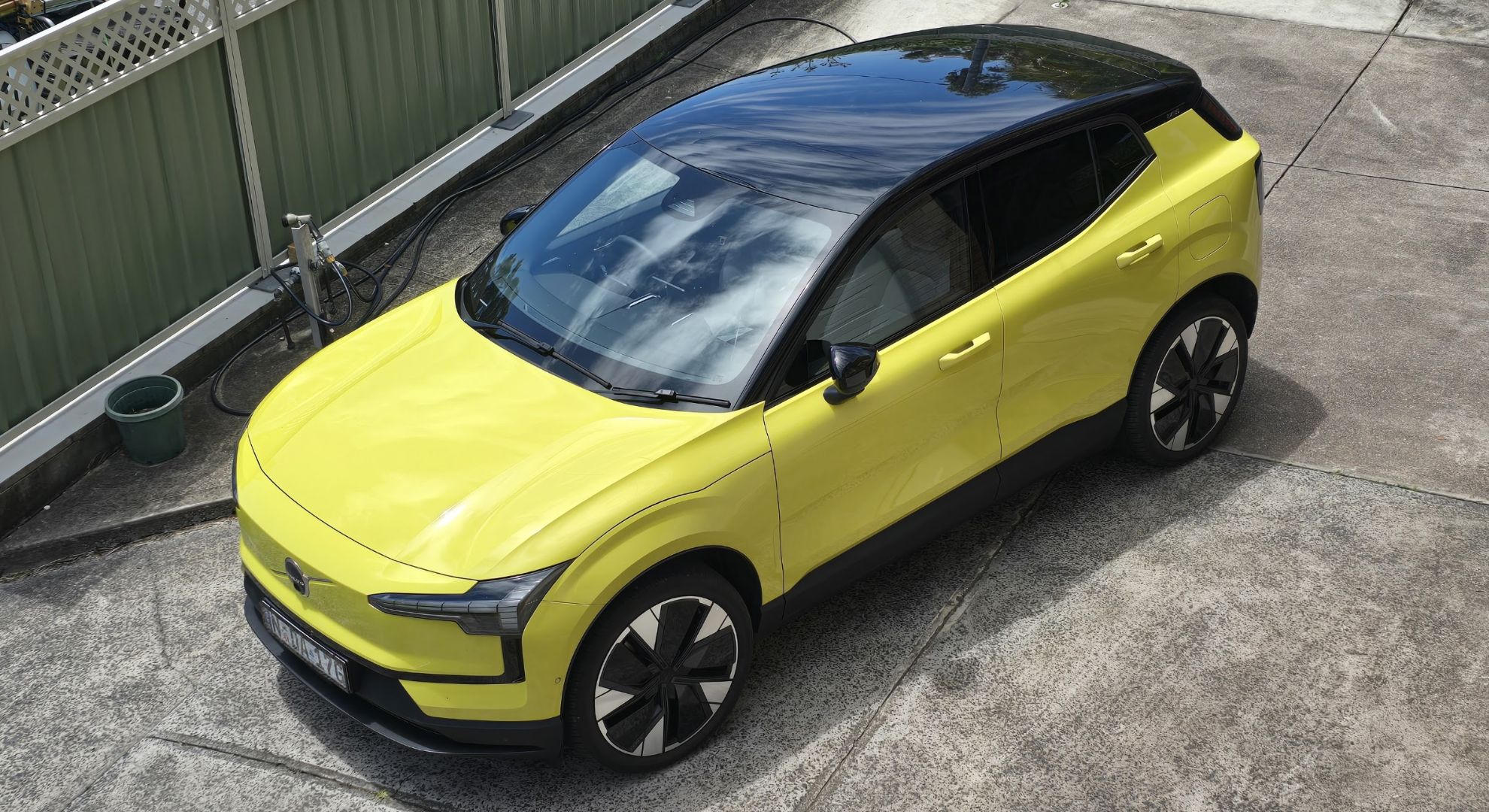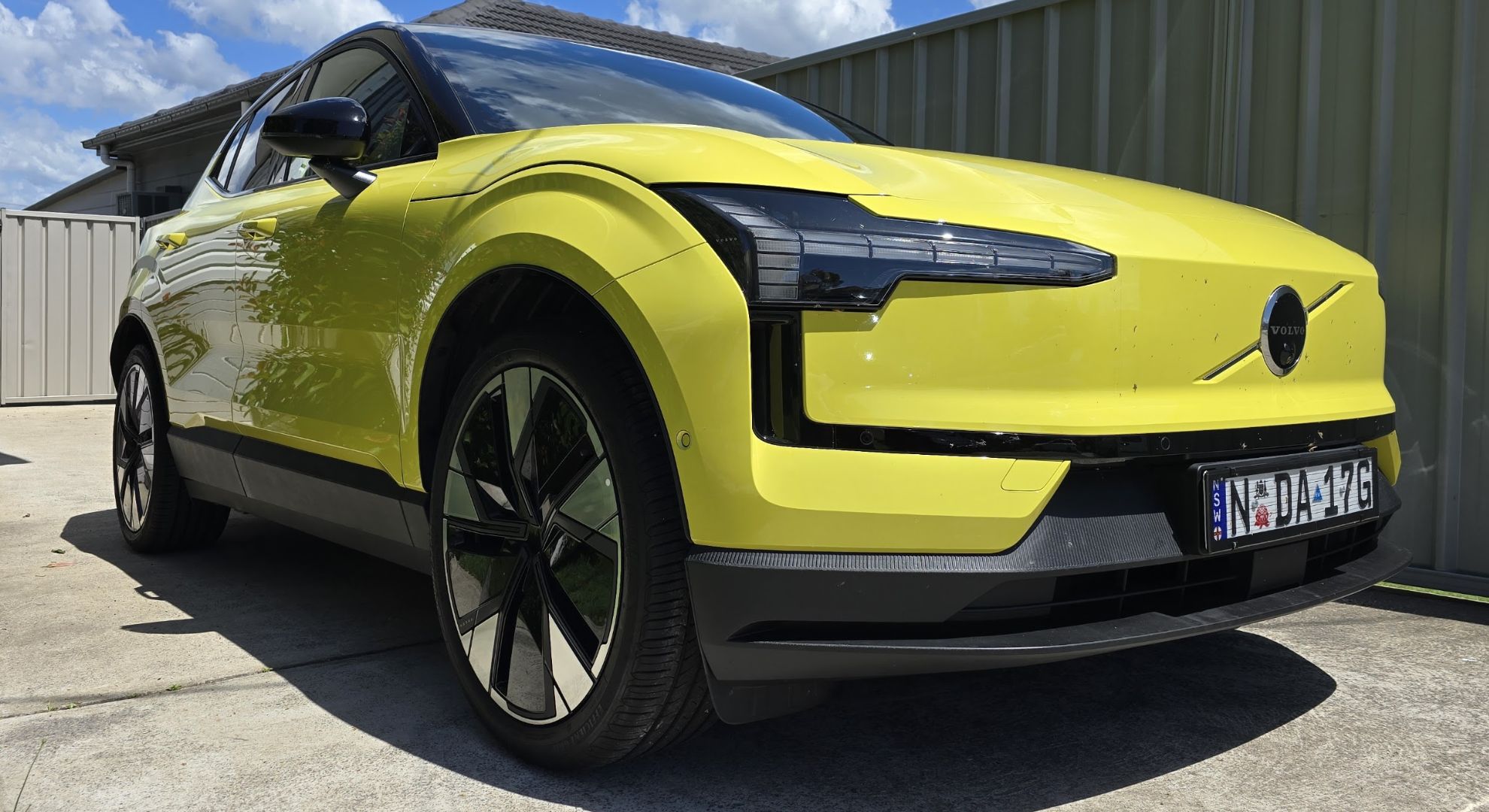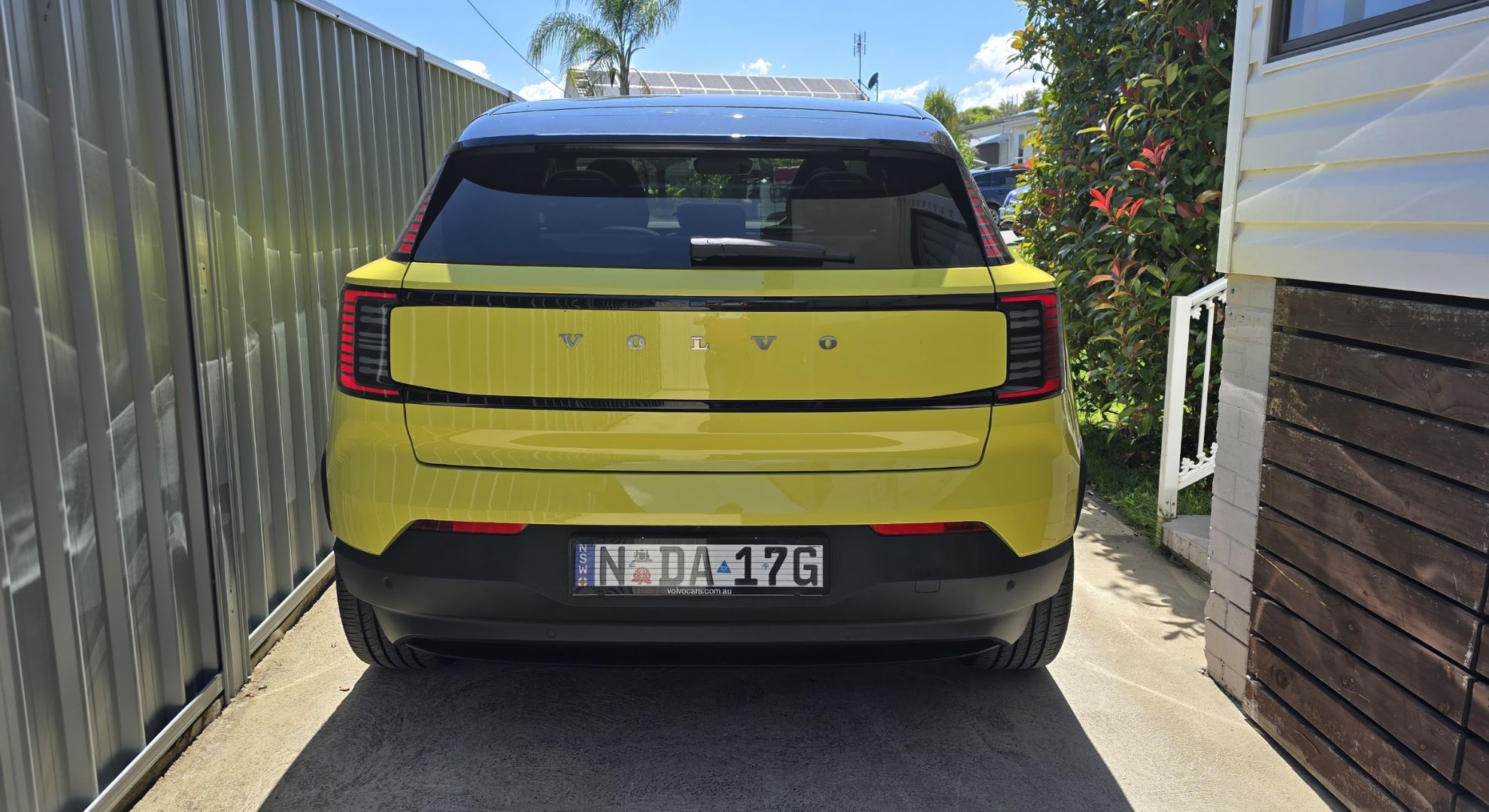
Volvo has been talking big about electrification for a while now, but despite some of the most ambitious (and now retracted) goals on ditching petrol, the company has long lacked an EV that exists on its own terms. The Volvo EX30 changes the story as the company’s first mass market, electric-only model.
The $44,900 / £32,850 / AU$60,000 entry price for the Volvo EX30 makes it an attractive and competitively-priced Tesla Model Y rival, especially outside of Europe where Volvo is perceived as a luxury, more premium brand. It’s the cheapest EV Volvo offers, priced below the Polestar 2 from Volvo’s sister brand.
That said, I believe some of the worst lessons have been taken from Tesla with the EX30. Abandoning buttons and dials is one thing, but compressing them into several points of failure is another.
Let’s take the EX30 for a spin.

What’s old is young again
Compared to Volvo’s other cars, the EX30 feels completely brand new. The energized grille and hammer-shaped headlights, the mix of rounded curves and straight panels from trunk to front, and the great big tablet centre console allow the EX30 to stand proudly, even in the company of newer, more cyberpunk contemporaries (such as the Kia EV6 and Hyundai Ioniq 5).
Given how aesthetically dissimilar this car is to Volvo’s previous cars, the EX30 is more akin to the Polestar 2 (what is often seen as the futuristic, flare-filled luxury alternative to Volvo) than the Volvo XC40 (Volvo’s previous cheapest EV that had looked quite dated for a while, now named the EX40).
The model I drove is Volvo’s most sporty configuration – a dual motor, AWD variant with a WLTP range of 460km (253 miles EPA), wrapped in an un-Volvo like electric green/yellow colorway. In public, the car can charge at up to 150kW DC with a bowser-style charger, and up to 11kW AC with a capable home AC charger. An emergency wall plug charger comes included, capable of a standard 2.4kW charging capacity.
Volvo also offers a cheaper ‘single motor extended range’ variant of the EX30 in many territories (only the dual motor option is offered in the US) with a WLTP range of 480km. And then there’s an even cheaper ‘single motor standard range’ option with a WLTP range of 337km, though this model has more limited availability and isn’t sold in some markets, such as Australia.
Despite its exceptional weight (1,830 – 1,943 kg, depending on the model), it feels quite nimble on the road and its turning circle is satisfactory. The suspension featured in the upmarket model led to some of the best road feeling I’ve ever had with an EV, and no matter what terrain I was driving on, the EX30 was well up to the task.
It’s a comfortable car with a lot of space in the trunk – perhaps not enough room for a spare wheel compartment, but definitely ample for a weekend getaway at 318L (or 904L with seats folded down). It also oozes charm with its programmable interior lighting, its widely customisable cupholders and its cartoonish moose under the bonnet (I love little easter eggs like this in cars). Capped off with Android Automotive, it’s easily one of the most satisfying ‘smart’ cars available.

What’s young is getting old
Unfortunately a great deal of the EX30’s controls are clustered in central points of failure. Most of the settings (including air conditioning and some headlight settings) are only accessible through the central infotainment touchscreen.
Meanwhile blinkers, wipers and some headlight controls have been compressed into the left stick, while the right stick is entirely dedicated to shifting between drive modes (reverse, neutral, drive and cruise, with park brake applied via a button on the end of the stick). Cruise options such as lane assistance and car keeping distance must be tweaked through the infotainment system, although thankfully speed adjustments still have buttons on the wheel.
Even the small glovebox, which is uniquely located below the touchscreen, can only be opened through the car’s infotainment system. There’s not even a physical on/off button for the car, and this philosophy extends to the keyfob which has done away with the usual buttons to manually lock or unlock the car. Instead, everything is done by app or proximity, or by tapping the fob against the driver's side window column.
Those unconventional stick controls meant I often accidentally shifted the right stick to activate the wipers, only for nothing to happen except the car telling me it’s preventing gear shifting at speed. I also had an immediate lack of confidence in not having the ability to manually lock my car with the fob – though you can, however, do this in-app.
There’s also no instrument cluster. There is no speedometer behind the steering wheel, nor an indicator for remaining range, current gear, or any current trip information. These things, again, have been stuffed into the infotainment screen, so while driving you must provide at least some attention to the centre screen. This, mixed with the lack of physical buttons, may not gel too well with many drivers.

The EV for many companies to beat
At its attractive price point with its premium design, the Volvo EX30 is an EV that both customers and competitors should look to as a worthwhile rival to the overwhelmingly successful Tesla Model Y. It’s just as capable a car, with an Android Automotive operating system to rival Tesla’s thorough software that also provides a slightly more familiar driving experience that may be more attractive to folks wanting a more normal car.
That normality doesn’t quite extend to the entire vehicle however, as big parts of it feel directly inspired by Tesla’s divisive minimalism – including the move to centralise large bits of the user interface into single points, like the left stick and the infotainment system.
Rivals to the Volvo EX30 include the Tesla Model Y, the Hyundai Kona Electric, the BYD Atto 3 (not available in US) and the Kia EV3, and though the last of those cars is only new to the market, the EX30 is quite an impressive standout among these competitors. It’s worthy of consideration for anyone who’s after a small and luxury-feeling EV with a capable (though not class leading) maximum range.







